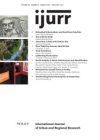With their acute spatial dislocation and racial polarization, South African cities have always offered a great deal of interest for the specialist and non‐specialist alike. Arguably, however, this racial ‘uniqueness’ has in fact burdened and restricted analysis of these cities. Alternative insights are needed to fill out the wider picture of urban diversity in South Africa, particularly variants of the apartheid city within the neglected bantustan periphery. For almost twenty years Mmabatho was the capital of the nominally independent bantustan, Bophuthatswana. This capital was distinctive for being both newly planned and, as the regime intended, also an affirmation of ethnic identity. The article therefore argues that in accounting for Mmabatho’s urban form and its landscape of exclusion and inequality, the competing motivations underpinning its creation should be assessed. The two major motivations involved the planned modernism by consultants and the drive for modernization by the regime itself. Both favored ‘top‐down’ practices centered upon adapting the specificity of Tswana culture to the apparent universalism implicit to modernization. The cultural and political motives of the regime, coupled with the aesthetic functions defined by the architects and planners, reflected the ambiguities implicit in modernizing the urban landscape. Bophuthatswana’s experience can provide powerful insights into the contradictions of the apartheid project itself; a project which celebrated ethnicity and culture, yet, at the same time, insisted upon modernizing the less developed (and by implication racially and developmentally inferior) bantustan periphery. Bophuthatswana’s ‘nation‐building’ therefore failed to transcend the universalism implicit in modernist practices. This failure was most visible in the developmental bias towards Mmabatho and the conspicuous inequality between this city and its peri‐urban environs. The efforts to create enabling strategies and more democratic planning approaches could perhaps benefit from reflecting upon such ambiguity.
Details
Written by:
Peris Sean Jones
Digital Object Identifier (DOI)
10.1111/1468-2427.t01-1-00234
About DOI
Read full article as PDF
Read full article as HTML
See the references for this article
